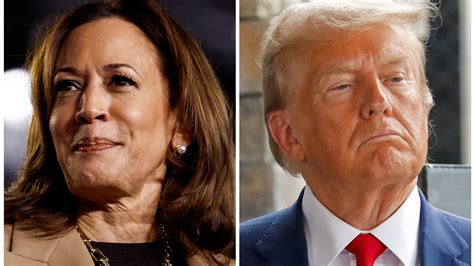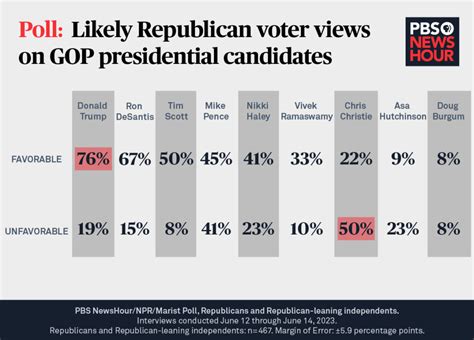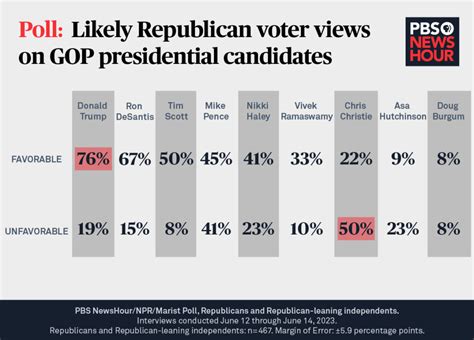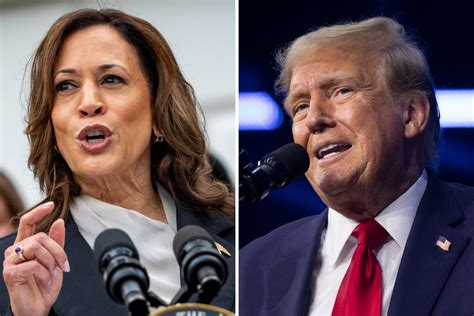Explore the latest insights into election polls, their impact on voter behavior, key influencing factors, and future trends in our comprehensive analysis.In today’s fast-paced political landscape, understanding the dynamics of election polling is more crucial than ever. Election Polls Today: The Latest Insights delves into the complexities of how polls are conducted, their influence on voter behavior, and the key factors shaping this year’s electoral outcomes. With a keen focus on interpreting the numbers and exploring future trends, this article offers readers an in-depth analysis of the polling process and its ramifications for democratic engagement. Whether you’re a political enthusiast or simply wish to grasp the significance of the latest data, our comprehensive insights will equip you with the knowledge needed to navigate the upcoming elections with confidence. Join us as we unpack the world of election polls and their pivotal role in shaping electoral decisions.
Understanding How Election Polls Are Conducted Today
Conducting Election Polls today involves a systematic approach that incorporates various methodologies to ensure accurate and reliable results. Polling organizations use a mixture of traditional and modern techniques to gather data from potential voters, with the aim of capturing a representative snapshot of public opinion.
One of the primary methods used in election polls is random sampling. This involves selecting a group of individuals from a larger population in such a way that every member of the population has an equal chance of being included. Random sampling helps eliminate bias and ensures that the results are reflective of the broader electorate.
Additionally, modern election polls often utilize online surveys, telephone interviews, and even mobile polling applications, which allow for quicker and broader data collection. The growing reliance on technology has not only increased the speed of data gathering but also enabled pollsters to reach younger demographics who may be less accessible through traditional methods.
To ensure the accuracy of election polls, analysts also weight the data they collect. This means adjusting the responses to account for demographic factors, such as age, race, gender, and geographical location. By doing so, pollsters can more accurately represent the voting population as a whole.
Another critical aspect of conducting election polls today is the importance of transparency in methodology. Polling organizations are increasingly providing details about how their polls are conducted, including sample sizes, margin of error, and the time frame in which the data was collected. This transparency helps enhance public trust in the findings.
The process of conducting election polls today is multifaceted, utilizing a combination of traditional sampling techniques, modern technology, and rigorous data analysis. These methods aim to provide insights into voter preferences and behaviors, which are essential for understanding the electoral landscape.
The Impact of Election Polls on Voter Behavior
Election polls play a pivotal role in shaping public perception and voter behavior during an election cycle. The influence of these polls can be observed in several ways:
- Creating a Bandwagon Effect: When a candidate is shown to be leading in election polls, it can create a bandwagon effect where voters are more likely to support the perceived frontrunner. This can lead to shifts in voter sentiment and increase a candidate’s overall support.
- Demotivating Unsure Voters: On the contrary, if polls indicate a candidate is significantly trailing, it may demotivate potential supporters, leading them to abstain from voting altogether. This phenomenon highlights how perceptions created by election polls can directly influence voter turnout.
- Framing the Election Narrative: The media often emphasizes election polls, which can frame the narrative surrounding the elections. Candidates are compelled to modify their strategies and messaging in response to public perceptions shaped by these polls.
- Shifting Resources: Candidates and political parties may shift their resources toward voters indicated by current polling data. This strategic allocation can alter campaign outreach and engagement efforts, further affecting voter decision-making processes.
Overall, the impact of election polls extends beyond mere numbers. They can significantly shape the dynamics of an election and influence how individuals engage with the political process.
Key Factors Influencing Election Polls This Year
As Election Polls play a crucial role in shaping the political landscape, understanding the factors that influence these polls is essential for interpreting their results accurately. Several key elements are at play this year, impacting both how polls are conducted and the outcomes they predict.
| Factors | Description |
|---|---|
| Political Climate | The current state of political affairs, including major events and controversies, can significantly sway public opinion, ultimately affecting Election Polls. |
| Demographic Shifts | Changes in voter demographics, such as age, ethnicity, and education level, can lead to different voting patterns that pollsters must account for. |
| Media Influence | The role of media coverage and social media chatter can amplify certain narratives, impacting voter perception and behavior reflected in Election Polls. |
| Voter Engagement | Levels of enthusiasm and engagement among voters can directly influence turnout, which in turn affects poll accuracy and results. |
| Polling Methodology | Methodological choices such as sample size and question wording can introduce biases, impacting the interpretation of Election Polls. |
These factors demonstrate that the landscape of Election Polls is complex, and as the electoral process unfolds, their implications become increasingly significant.
Interpreting Election Polls: What Do the Numbers Mean?
Understanding election polls can be a daunting task, especially for those unfamiliar with statistical methods and polling terminology. Each poll can provide a snapshot of current voter sentiment, but interpreting these numbers correctly is crucial for both campaigns and voters.
When analyzing election polls, it is essential to consider the margin of error. This percentage indicates how much the results could vary from the true sentiments of the population surveyed. For example, if a poll shows a candidate leading by 5 points with a margin of error of ±3%, the actual support for that candidate could range from 2 to 8 points ahead.
Another vital aspect is the sample size. Generally, larger sample sizes yield more reliable results as they offer a better representation of the population. A poll with a sample size of 1,000 respondents typically has a higher confidence level than one with 300 respondents.
The methodology used in conducting the poll also plays a significant role. Polls can be conducted through various means, including telephone interviews, online surveys, or face-to-face interactions. Each method has its biases, which can affect the overall results. For instance, online polls may not accurately represent lower-income demographics who may not have regular internet access.
Additionally, timing can influence election polls. Polls taken closer to the election date tend to reflect more accurate voter sentiment. Voter opinions can shift dramatically due to events such as debates or political scandals, so understanding when the poll was conducted is essential for accurate interpretation.
It’s crucial to remember that polls represent only a moment in time. They do not account for future voter turnout, which can be impacted by various factors such as weather, voter enthusiasm, and ongoing campaign strategies. As such, while election polls can be a valuable tool for gauging public opinion, they should not be regarded as definitive indicators of election outcomes.
The Future of Election Polls: Trends and Predictions
As we look ahead, the landscape of Election Polls is expected to evolve significantly due to several driving factors. The advancements in technology, shifts in voter sentiment, and methodological revamps will play crucial roles in shaping future polling practices.
One prominent trend is the increasing incorporation of Big Data and analytics in election polls. Pollsters are beginning to leverage vast amounts of data from social media platforms, online interactions, and even behavioral economics to enhance the accuracy of their predictions. This shift towards data-driven polling methods will likely inform more nuanced understandings of voter behavior and preferences.
Moreover, as mobile technology becomes more pervasive, we can expect a rise in automated polling techniques, such as interactive voice response (IVR) and online surveys. This shift will facilitate higher response rates and enable pollsters to reach a broader demographic, ultimately leading to more representative election polls.
Additionally, with the growing importance of transparency and credibility, we might see a movement towards greater disclosure of polling methodologies. Voters and analysts are becoming increasingly critical of how election polls are conducted, and pollsters may need to adapt by providing clearer insights into their processes and data sources to maintain public trust.
As we experience global shifts in political engagement and digital connectivity, the internationalization of polling methods will also come into play. Cross-border collaborations among pollsters could lead to a more standardized approach to election polls, enriching the insights drawn from different electoral landscapes.
The future of election polls is poised for transformation, characterized by technological innovations and increased accountability. Keeping a close watch on these trends will be essential for both voters and candidates as they navigate the electoral maze ahead.
Frequently Asked Questions
What are election polls and why are they important?
Election polls are surveys that gauge public opinion on various political candidates and issues. They are important because they provide insights into voter preferences, trends, and potential outcomes of an election.
How often are election polls conducted?
Election polls can be conducted frequently, often in the weeks leading up to an election. Major polling organizations may release new data several times a month, while some conduct daily tracking polls.
What factors can influence the accuracy of election polls?
Factors such as sample size, method of data collection (telephone, online, etc.), timing of the poll, and the demographics of respondents can all influence the accuracy of election polling results.
What are some recent trends observed in election polls?
Recent trends include increased reliance on online polling methods, heightened voter engagement through social media, and growing concerns about misinformation affecting public perception.
How can voters interpret poll results effectively?
Voters can interpret poll results by looking at the margin of error, understanding the sample size, and considering the date of the poll, along with the context of current events and historical voting patterns.
What role do undecided voters play in election polls?
Undecided voters can significantly impact election outcomes as they represent a pool of potential votes that can swing either way. Their numbers can also fluctuate leading up to Election Day, affecting poll predictions.
How do election polls vary between different regions or demographics?
Election polls can vary significantly based on geographic location, cultural factors, socioeconomic status, and age demographics. Regions may favor different candidates based on local issues and community values.









